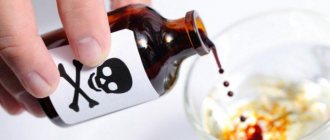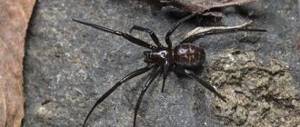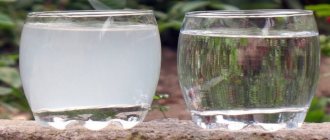How can you protect yourself from horsefly bites?
So, to protect yourself from horse flies you need to:
- Wear light-colored clothing with long sleeves - insects' eyes are more adapted to bright and dark colors.
- Install mosquito nets on windows and balcony doors. You should also put a net over your stroller or rest tent.
- Use repellent aerosols: DEET, OFF, ARGUS Extreme, Reftamid. For safety reasons, children are recommended to use essential oils, which can be applied to clothing or skin, after first making sure that there is no allergic reaction. Esters of clove, lavender and eucalyptus have proven themselves well.
- Plant marigolds, geraniums or tomatoes in the garden - horse flies cannot stand their aroma. At home, you can put bunches of wormwood, lavender, peppermint or lemon balm on the window.
- Choose for a trip outside the city in the morning or evening, or on non-sunny days, since bloodsuckers are more active under the bright rays of the sun.
- Add chamomile to the fire - the smell of the plant will scare away annoying insects.
Before you go on vacation, you should find out what the likelihood of encountering these blood-sucking insects is and, if necessary, take protective equipment with you - repellents. If you still cannot avoid the bite, you should immediately treat the wound with an antiseptic, apply a cold compress and take an antihistamine. If the symptoms are mild, treatment can be carried out at home, but if the victim feels worse, it is necessary to contact a medical facility.
Quite often you hear: “I was bitten by a gadfly. What to do?". Firstly, I would like to immediately note that this is impossible. The fact is that almost all species of this insect do not have a piercing-cutting type of mouthparts. That is, even if they want to, they will not be able to bite through your skin. In principle, they don’t need this. Adult spiderworts (as gadflies are called in many areas) do not feed or bite!
They have enough of the substances that they accumulated while they were in the larval stage.
But what really stings both people and animals (including cattle) are horseflies. For what? To get blood, which, like the same mosquitoes, they need to reproduce.
Why then do you still hear from many people (and even doctors) about cases where gadflies were bitten? This is explained by the fact that people confuse these insects. As a result, horseflies and gadflies sometimes act as synonyms. That is, this is the name of all flies that overcome people, livestock, animals, etc.
Types of insects
Commonly encountered species of the described insect include:
- Bullfly - considered the largest species of the described family, reaching a length of about 20 mm. The bullfly is a two-winged insect belonging to the horsefly family. This species of horsefly lives in Europe, colored brown, with dark stripes located along the body and yellowish hairs.
Bullfly photo - Lacewings or moths - about 250 species of horseflies are equated to the described genus. The most common horsefly is the common lacewing, reaching a length of 14 mm and having a rather bright color of its body. The chest of this insect has a blackish color, while the abdomen is complemented by original yellow spots. The wings of the lacewing have a mosaic color, the top of which is completed by brown spots located on them. The huge faceted eyes cast an emerald-golden color;
Lacewing photo - An ordinary raincoat - with a modest color and wings with a complex smoky pattern. The described type of insect can produce, so to speak, a real horsefly bite, even in gloomy and cloudy weather.
Treatment
Recipes from traditional healers
Many folk remedies for gadfly bites are right under your feet. Medicinal herbs have anti-inflammatory, antimicrobial, antiseptic properties. This is exactly what is necessary to provide first aid for any insect bites. The most effective ways to prevent infection include the following folk remedies:
- Plantain leaves. The young plant must be crushed to a thick paste and applied to the bite site, and after the product has dried, the procedure should be repeated. Plantain contains biologically active substances that reduce the severity of pain and prevent the development of edema;
- Dandelion leaves. Fresh leaves need to be mashed a little, applied to the bite site and secured with a bandage. Dandelion exhibits antiseptic and anti-inflammatory activity and is able to stop the spread of infection.
You can do without medicinal plants. What to do if you are bitten by a gadfly and there is no medicine at hand:
- dilute a teaspoon of soda in a glass of water, soak a bandage in the solution and apply to the site of the gadfly bite;
- treat the damaged area of skin with sour cream or freshly squeezed tomato juice;
- place ice in a plastic bag, wrap it in a thick cloth and apply to the bite area for 10 minutes.
A compress of grated fresh potatoes effectively eliminates swelling of all layers of the epidermis. You can lubricate the bite site with low-fat sour cream, kefir, and valerian tincture.
Pharmacological drugs
If an insect attacks a person while hiking or gardening, you need to use disinfectant or antiseptic solutions that are in any first aid kit. How to anoint a gadfly or horsefly bite:
- 3% hydrogen peroxide;
- alcohol solution of chlorhexidine bigluconate;
- brilliant green solution;
- alcohol solution of iodine;
- a slightly pink solution of potassium permanganate.
Ethyl alcohol, and even regular vodka without additives, will help prevent the spread of infection and reduce the severity of swelling. The victim should definitely be given a tablet of any antihistamine:
- Suprastin;
- Tavegil;
- Loratadine;
- Cetrin;
- Zyrtec.
To quickly eliminate the symptoms of general intoxication (chills, fever, pain), you can use non-steroidal anti-inflammatory drugs. How to treat a gadfly bite with NSAIDs:
- for adults, take a tablet or capsule of Ibuprofen, Nise, Nimesulide;
- Give the child a teaspoon of syrup or suspension of Ibufen, Nurofen.
If there are no such products in the medicine cabinet, then regular Paracetamol in tablets or syrup will help reduce the temperature and relieve pain.
Everyone loves to relax in nature, swim in the river, and also fish or hunt. Rest in the forest is, of course, great, but it can be overshadowed by insect bites. The bite of the gadfly poses a particular threat. These are such inconspicuous gray flies, but their bite becomes very painful. However, despite this, they almost never cause harm, but they also do not go away without a trace.
It happens that the place where the insect bit a person begins to itch, bleed and hurt. In such a situation, we are talking about an allergic reaction that arose from the bite. This is all due to the substance that penetrated through the resulting wound.
Children should be more wary, because they have delicate skin, so bite marks take a very long time to heal. It may happen that the wound begins to fester, and this is bad.
Reproduction
Mating occurs in swarms on top of hills. The time of year, time of day, type of landmark used for mating are species specific.
Eggs
Eggs are laid on rocks or vegetation near water, in groups of up to 1000, especially on emerging aquatic plants. The eggs are white at first, but darken as they age. They hatch in six days.
Larvae
The emerging larvae use a special incubation spine to open the egg. The larvae end up in water or on damp soil. They have small heads and 11 or 13 segments. In some varieties, the larvae have a period of rest in winter (diapause). Tropical species breed several times a year.
The larvae are carnivorous, feeding on worms, insect larvae, and arthropods. They can be infected by nematodes and flies of the families Bombyliidae, Tachinidae, Hymenoptera, Pteromalidae. After full development, they move to dry soil near the surface of the earth to pupate.
Dolls, adults
The pupae are brown, shiny, rounded at the head end, tapering at the other. The buds of the wings and limbs are visible. Each abdominal segment is bordered with short spines. After about two weeks, the metamorphosis is completed.
The pupa splits along the chest and an adult fly emerges. Males usually appear first. When both sexes appear, mating occurs. Courtship begins in the air and ends on the ground. The female must feed on blood before laying eggs.
What to do if bitten by a gadfly?
To prevent the development of serious consequences after an insect attack, you need to clearly know what helps with a gadfly bite. The sooner first aid is provided, the fewer negative consequences a person will experience. Therefore, you should clearly know what to do if your leg is swollen after a bite, or redness appears, in order to reduce the risk of an allergic reaction.
Also, when going into nature or on vacation to the water, you need to stock up on the necessary anti-allergy medications, painkillers
Folk remedies in the form of herbal compresses help well with a bite, so it is important to predict everything in advance in order to have the necessary remedies on hand in case of a bite
Emergency therapy
Every person should know how to provide first aid when bitten by a gadfly. It should be as follows:
- Press on the wound with something hard or with your finger. This will prevent the insect's toxic saliva from quickly spreading under the skin and will reduce pain.
- Apply ice. This will help relieve itching and swelling.
- Rinse the wound under cold water. This will wash away all the dirt from the wound. When washing the wound, use ordinary toilet or laundry soap; it has a disinfecting effect.
- Immediately treat the bite site with a disinfectant to avoid infection.
If a gadfly has bitten the eye, it is also advisable to immediately apply cold to relieve the itching and prevent swelling.
How to treat a bite with drugs?
When emergency treatment is delayed, or a person develops an allergy, drug treatment should be resorted to. If swelling develops from a gadfly bite, we can talk about an allergic reaction. In this case, take antihistamines to eliminate allergy symptoms. Such drugs include: Suprastin, Tavegil, Claritin, Zyrtec and many other pharmaceutical products.
You should also know what to apply to a gadfly or horsefly bite. Ointments that have an anti-inflammatory effect are suitable here: Hydrocortisone, Prednisolone. Such remedies for horsefly and gadfly bites are applied immediately after an insect attack.
To relieve itching from a bite, medications such as Fenistil-gel, Bepanten ointment or Depanthenol are applied to the wound.
Folk remedies
It happens that there are no first aid medications at hand after an insect bite. In this case, you have to resort to treatment with folk remedies. You can use the following plants:
- Plantain leaves. The plant is crushed to a paste consistency and applied to the wound. Plantain will help cope with pain and prevent swelling from reaching large proportions.
- Dandelion leaves. Used as a compress. The leaves should be softened a little and applied to the damaged area. Dandelion will quickly help heal the wound, preventing swelling from spreading to healthy tissue. Has an anti-inflammatory effect.
- Mint. Has a calming effect, relieves swelling and inflammation. Will help cope with itching.
It also happens that medicinal herbs are not at hand. You will have to carry out treatment at home. The following tools are suitable for this:
- dilute baking soda in a glass of water, moisten a bandage in the solution and apply to the bite site;
- tomato juice, sour cream, kefir help relieve swelling and cool the affected area;
- raw potatoes relieve swelling and redness well.
Symptoms
Horsefly bites can have serious consequences. Swelling appears at the wound site. Insect saliva contains toxic substances and anticoagulants. Therefore, when at the site of the bite it enters the blood of a person or animal, unpleasant symptoms of a horsefly bite appear.
After an insect attack, the following symptoms appear:
- itching and burning;
- pain;
- hyperemia and redness;
- swelling of tissues.
An allergic reaction is common in some people. In such cases, the affected limb becomes completely swollen or covered with pimples. If purulent inflammation has formed, a lump appears filled with pus. To prevent such a situation, you should use special repellents against horseflies. When it was not possible to avoid a horsefly attack, and a limb or foot is swollen after being bitten by a gadfly, you need to visit a doctor. He will conduct an examination and tell you how to treat the affected area.
Basic information about horseflies
Horseflies are a type of midge (two-winged blood-sucking insects).
In total, there are about 4,000 species of such animals, 200 of which live in our area. The favorite habitats of horseflies are areas with abundant vegetation (forests, gardens, groves, crops in fields). But pests also thrive in urban environments. Compared to ordinary mosquitoes, horseflies are quite large blood-sucking insects. It is slightly larger than a regular fly. Horseflies have several stages of development. An interesting fact is that only female insects suck blood. Males feed on vegetation. At one time, the female sucks several times more blood than a mosquito.
You can distinguish a female by her appearance. Its body is almost 2 times larger in size than that of the male, its eyes are bulging, round, iridescent in multicolor. There is a bridge between the eyes.
Females feed on the blood of animals and humans. Without this food they will not be able to lay offspring.
The insect becomes active in the warm season. The largest number of parasitic flies is found in June-July. Horseflies love sunny, windless weather. You can't see them in rain or hurricanes. Parasites look for their victims based on two main signs - moisture and the smell of sweat. Insects have very developed jaws located in the proboscis. They use them to gnaw through the skin of a person or animal to extract blood. It is surprising that they sense the proximity of blood vessels. And they sting most often in those places where the skin is thinner and the capillaries are close to the surface.
There are cases where the parasite has bitten the eye (eyelid), head, or lip.
The area after a horsefly bite is always red. The bite itself is also sensitive. Only a sleeping person can miss it
Sometimes people mistake horseflies for ordinary flies and do not pay attention. In a short time, the parasite manages to choose a victim and tries to sting as quickly as possible
Appearance Features
There are about 1,600 species of horseflies in nature. All of them are large in size - about 2 cm. The female is easy to distinguish by her large build, large iridescent eyes and the bridge between them.
The insect has an extremely complex oral apparatus. Powerful jaws, piercing, cutting, sucking components. Pierces the skin thanks to its fleshy, long proboscis.
The male's abdomen is pointed, the female's is rounded. Coloring in gray, brown dull tones. Large eyes are clearly visible, shimmering in the sun with all the colors of the rainbow.
Horsefly
Unpleasant consequences of a bite
A wound after a bite from these dangerous insects rarely heals quickly and without a trace. A small bruise, redness, lump or papule may remain for at least a week. If the necessary measures have not been taken, then an abscess often forms at the site of the bite, which gradually increases and periodically hurts. The fact is that horseflies, along with saliva, inject pathogenic bacteria under the human skin.
The gadfly can even lay its eggs in the soft tissues of a person, from which larvae will appear in the course of further development. The body, of course, reacts very strongly to such parasites.
But it's not all that scary. There are also more dangerous consequences of bites. These include:
- Large swelling of soft tissues. They can be so strong that most of the limb swells - from the hand to the elbow on the arm, from the shin to the knee on the leg. At the site of the bite, redness and a rash similar to hives appear. This painful condition can be eliminated by taking an antihistamine. The greatest swelling often occurs with a bite to the head, lips, neck and eyes. In this case, the larynx and tongue may begin to swell, which prevents free access of air, causing suffocation and asphyxia.
- Infection with dangerous viruses. – carriers of tularemia, filariasis, anthrax, etc. Therefore, a bite and contact with these insects can potentially infect a person. What to do? Monitor your health, and if you notice strange symptoms, go to a medical facility immediately. It wouldn’t hurt to get tested to confirm whether there was an infection or whether you are completely healthy.
- Anaphylactic shock. If a person is severely bitten and a large amount of toxic substances enters the bloodstream, a rapidly developing allergic reaction that threatens life may begin. You need to act quickly and clearly. First of all, we call an ambulance and limit the intake of the allergen. After which we carry out anti-shock measures: we lay him on his back and free him from tight clothing, ensuring the supply of oxygen. The arriving medical team must administer an antihistamine and decongestant intramuscularly. If the pressure has dropped or there is a fainting condition, then an adrenaline injection is given.
Moreover, the most severe consequences of an attack by these flying insects occur in children under the age of 5 years. Their immune system is still developing, and the permeability of blood vessels is higher than that of an adult. Toxins from the gadfly's saliva quickly spread throughout the body, causing severe intoxication. Therefore, many experts recommend showing children to a doctor after a bite.
Signs of parasitism on the skin
You can see what a horsefly bite looks like in the photo. Symptoms in humans are unpleasant, painful, and can occur with varying degrees of intensity. Main symptoms:
- instant redness of the skin;
- burning, severe itching;
- pain at the site of the bite;
- prolonged bleeding;
- puffiness, swelling;
- When pathogenic microorganisms enter the wound, suppuration develops.
The reaction to a bite in children is much stronger; red spots are clearly visible on sensitive skin. An allergy to a bite in sensitive people is manifested by large-scale redness of the skin, an additional rash, severe swelling, and unbearable itching.
After a horsefly bite, it is recommended to wash the wound and disinfect it, but in the field this can rarely be done. For people with strong immunity, the consequences of a horsefly bite are not so terrible, while people with a tendency to allergies have to undergo special treatment. The horsefly bite in the photo is shown below; you can assess the scale of the problem.
How to protect yourself from being bitten
When planning a trip to nature, you need to wear closed, light-colored clothes with long sleeves that do not have a bright pattern. The fact is that the eyes of horseflies can only distinguish dark or very bright colors well. It has been noticed that light-colored pets are bothered by horseflies much less than their counterparts painted in darker colors.
For country picnics, you should choose places significantly removed from pastures, farms and other places where you can find grazing livestock, since they are always accompanied by clouds of blood-sucking insects.
Horseflies are repelled by the pungent smell of wormwood. By hanging bunches of it near doors or windows, you can be sure that not a single one of them will fly into the house.
By throwing a few stems of chamomile into the fire, you can protect your campsite from annoying bloodsuckers.
A good way to protect against horsefly attacks is a mosquito net thrown over the tent. Horseflies prefer to bite sweaty or wet people, so you should not swim in a pond located in places where these insects are large.
Often, to reduce the number of bloodsuckers, special puddle traps are set up in farmyards by pouring a small amount of kerosene or fuel oil into them. Distributed in a thin layer over the surface of the puddle, these liquids prevent the take-off of insects that decide to drink from them on the fly.
Rest in the forest or near a pond is often spoiled by blood-sucking insects. A common nuisance is the bite of a gadfly, a small gray fly. It causes significant pain and discomfort, as the insect secretes a toxic substance contained in the saliva and enters the bloodstream through the wound.
Symptoms of a gadfly bite
It is impossible not to notice the damage to the skin, because immediately after the bite a sharp, sharp pain is felt. Further signs:
- rapid redness of the epidermis around the wound;
- burning and itching;
- swelling of the skin;
- suppuration (after 2-3 days).
Clinical manifestations are even more extensive if the bite occurs as a result of a gadfly bite. Histamines present in the gadfly's saliva provoke a response from the immune system. Swelling of the mucous membranes, lacrimation, bleeding at the wound site and increased body temperature may occur. Moreover, some people experience severe nausea and vomiting with bile, dehydration and other signs of intoxication.
Why is a gadfly bite dangerous?
The most dangerous varieties are the cavity and gastric types of insects.
In addition, the described species of flies is a carrier of dangerous diseases:
- filariasis;
- anthrax;
- trypanosomiasis;
- tularemia.
What to do if you are bitten by a gadfly?
Immediately after damage to the skin, you should immediately wash it with water, preferably with soap, and disinfect it. It is preferable to use iodine, hydrogen peroxide or brilliant green, but if you don't have them on hand, any solution containing alcohol, even vodka, will do. In this case, it is necessary to avoid scratching the wound and its additional mechanical damage.
If you don’t have a traveling first aid kit, you can use natural medicines - onions, plantain, dandelion juice, which is released at the place where the stem is cut, and herb. The listed products disinfect damaged tissue well, produce a bactericidal and soothing effect, and relieve irritation.
How to treat a gadfly bite?
With significant manifestations of allergic reactions, additional therapeutic measures are necessary. Treatment of a gadfly bite involves the use of antihistamines, both local and oral. To relieve pain, non-steroidal anti-inflammatory drugs are recommended, for example:
- Nurofen;
- Ibuprom;
- Nimesulide;
- Ibuprofen.
It is advisable to use drugs such as Aspirin and Paracetamol as antipyretics.
Suppuration at the site of the bite and the formation of subcutaneous boils require the use of antibiotics. Doctors advise taking a short course, no more than 5 days, after which you must begin to restore the intestinal microflora and liver function.
Going on vacation to the countryside, every person is attacked by blood-sucking insects, including large gray flies, often called gadflies. Sometimes their bites cannot be avoided. However, you need to know how to behave correctly after their attack and what to do to prevent the development of serious consequences.
Life activity of an insect
Although in an unfertilized state, females are also not averse to feasting on nectar. But after fertilization, they become aggressive, since they need the blood of animals for the process of egg development. In one horsefly bite, an animal can lose up to 200 milligrams of blood. The described insect uses its proboscis to so-called cut the skin, after which the horsefly begins to directly consume the blood from the resulting wound.
Interesting! Only female horseflies feed on the blood of warm-blooded creatures; males, on the contrary, eat exclusively flower nectar, as well as sugar-type secretions from worms and aphids.
Horseflies may be attracted to the following features:
- Dark color;
- The odor of sweat emitted from the future victim;
- Wet body, for example, a person after swimming;
- Movement of the source of the attack.
Although it would still be preferable for these insects to have a victim in an immobilized state.
The horsefly larva most often develops in water or in soil saturated with moisture; the described insects can often be found near bodies of water. Especially many horseflies can be found in hot weather; the peak of their activity is summer, which is in full swing.
Horsefly mandibles
So to speak, having eaten the blood of a female horsefly, I digest it quite quickly. After 2 days, only remnants of digested blood can be found in the intestines of insects. The female will feel hungry again, along with the eggs gaining weight. After 3-4 days after the female has consumed blood, she begins to lay eggs from 500 to 1000 eggs at a time. As a result of repeated consumption of blood (female horse flies can carry out up to 6 such cycles), insects can lay up to 3,500 eggs.
How to prevent gadfly attacks?
It is much easier to protect yourself from the appearance of harmful insects than to treat numerous bites and injuries afterward.
Following basic precautions will protect you from unpleasant contacts with pests:
The fight against gadflies at home should involve installing mosquito nets on windows and doors. Dry herbs (wormwood or tansy) can be used as a deterrent; their oil solutions, which are used in aroma lamps, have a similar effect; when going outdoors, it is better to give preference to closed clothing, and also take care of insect repellent sprays and creams; such products not only protect against gadflies, they also repel ticks and mosquitoes
The color design of outfits deserves a separate discussion - they are attracted to bright colors, but they rarely pay attention to things in pastel natural tones; If you light a fire in nature, after cooking, try burning a bunch of field chamomile in the fire; the resulting smell does not cause hostility among people, but guarantees safety from gadflies.
If precautions still do not help prevent insect attacks, begin treatment for bites as soon as possible, because delay can cause negative consequences for your health
The article focuses on issues related to eliminating problems caused by hornet stings and which will be extremely problematic to deal with on your own without consulting a doctor.
What does a horsefly bite look like and how dangerous it is, how long does it last, consequences and allergies
The horsefly is a type of large fly that feeds on the blood of animals. Horsefly attacks on humans are relatively rare.
The bite of this insect causes burning pain at the time of sting and severe itching after it, accompanied by swelling of the surrounding tissues.
A horsefly bite is especially dangerous for allergy sufferers. The victim may develop a fever, weakness, and deterioration in health.
It usually takes 2-3 days for the swelling from a horsefly bite to subside and a person’s general condition to normalize.
After a horsefly bite, my leg hurts and it is swollen, what should I do, what should I treat and apply?
After a horsefly bite, the following measures must be taken: - prevent the spread of horsefly saliva components by pressing the bite site with a finger or a hard object; - wash the bitten area with water and laundry soap; - apply a cold compress to the affected area of the body; - treat the skin around the wound with an antiseptic solution - brilliant green, alcohol, hydrogen peroxide, chlorhexidine, etc.
In the following days, Fenistil-gel, Panthenol or Rescuer can be applied to the wound to relieve swelling.
How to treat a horsefly bite in a child, which doctor to consult
If a child has been bitten by a horsefly, the baby should be shown to a therapist or dermatologist. You can also go to the emergency room to provide first aid, and in severe cases, call an ambulance.
To treat the consequences of a horsefly bite, children are usually prescribed anti-inflammatory ointments - Hydrocortisone, Advantan, Sinaflan.
How to treat a horsefly bite with folk remedies, how to relieve redness, swelling and swelling
You can reduce tissue swelling when bitten by a horsefly using the following folk remedies: - applying a leaf of cabbage, plantain, black nightshade, mint or dandelion to the inflamed area; - rubbing the skin around the wound with aloe, onion or garlic juice; - applying a bandage thickly soaped with laundry soap to the bite site; - cooling the swelling with a cold object or a heating pad with ice.
If a horsefly bite oozes, what should you do to make it go away faster?
A horsefly bite, in which minor discharge is observed from the wound, can be treated with corticosteroid-containing balms and ointments, for example, Advantan. To speed up the healing process, you can also take antihistamines - Suprastin, Claritin and the like.
Horsefly bite during and during pregnancy
Only a doctor can give advice on how to treat a horsefly bite during pregnancy. A pregnant woman, immediately after a bite, should wash and disinfect the wound, apply a cold compress to it (to relieve itching) and consult a specialist.
Horsefly bite on the lip, under the eye
If a horsefly bites you on the lip or under the eye, you should immediately call an ambulance. Tissue swelling caused by insect bites in these areas can lead to difficulty breathing and cause equally serious complications.
Before specialists arrive, a hard, cold object must be applied to the bite site. Cold will reduce swelling and relieve itching.
When they bite
Flies are active during the daytime. They love sunshine and warm days. But among them there are representatives that parasitize in cloudy weather.
Insects react to movement and moisture. Attracts their wet, sweaty body. It is difficult to fight off horse flies after swimming in a pond, when your whole body glistens with droplets of water. They bite a wet body with beads of sweat even more intensely.
Horsefly bite What does a horsefly bite with - its proboscis and powerful jaws. The tenacious paws that dig into the skin add to the painful sensations. It bites anywhere on the human body. The neck and back are most often affected. In these areas, blood vessels are closer to the surface.
The bite of a horsefly attracts other relatives to the victim. How horseflies bite is interesting not only to fauna lovers. In the process of piercing the vessels, the fly injects a substance that thins the blood and prevents it from clotting. After this, the wound bleeds for a long time, attracting hordes of new flies.
There are no parasites in urban areas, but if you go on a picnic or go to the country, there will be no end to the flies. To combat them, all kinds of traps and special insecticides are used, and the consequences of horsefly bites are treated in a special way.
Useful properties and uses of Securinega subshrub
Botanical characteristics of Securinega
Securinega is a delightful spreading shrub with fairly hard wood, varying in height from 1.5 to 2 metres. The straight, bare branches of the plant are thin and twig-shaped. Alternate leaves with a solid edge are complemented by single flowers with three styles and a spherical ovary. The fruit is a three-lobed, rounded, three-lobed capsule with smooth seeds. This wonderful plant usually blooms in June, and the fruits ripen only in September. Sekurinega is widespread in the Far East and in some areas of Siberia.
Useful properties of Securinega
The leaves of Securinega and its stems, the thickness of which does not exceed 3 mm, are considered an excellent medicinal raw material. Securinega contains an alkaloid, the content of which is high. Various drugs based on Securinega have a powerful stimulating effect on the human nervous system. They significantly increase the excitability of the spinal cord.
Application of Securinega
Securinega is used for serious asthenic conditions, fatigue, neurasthenia, flaccid paralysis, sexual weakness, as well as for functional nervous disorders. Securinega should be used in strictly prescribed dosages. As a rule, special pharmacological preparations are prescribed 2 times a day, 30 drops. You can prepare an infusion based on 1 gram of dry leaves of the plant and a glass of boiling water. The product must be infused for at least two hours, after which it can be used after each meal, 1 tablespoon.
It should be noted that Securinega is significantly superior to strychnine in its potency. For heart weakness, this plant is simply irreplaceable. It is also effective for fractures and burns, for healing extensive wounds and for all kinds of food intoxication.
Securinega subshrub
Securinega subshrub is an unusual dioecious plant with numerous thin branches that can reach a height of three meters. Straight stems with alternate short-petioled elliptical leaves have a light green tint. Their length does not exceed 7 cm. Unisexual, inconspicuous yellowish flowers are arranged in small bunches. The fruit is presented in an elegant three-locular capsule, which contains about 6 smooth seeds of 2 mm each.
Securinega blooms in June and July, and it usually bears fruit at the end of September. This plant is found wild in the Khabarovsk and Primorsky territories, as well as in the Amur region. It chooses forest edges and rocky dry slopes for growth. It should be noted that this herb is widely cultivated in Moldova, Ukraine and the North Caucasus.
Contraindications to the use of Securinega
Numerous preparations from such a medicinal plant are contraindicated for nephritis and hypertension, as well as for bronchial asthma. You will have to avoid using this plant during pregnancy. Securinega is also excluded in case of acute poliomyelitis, muscle spasms, respiratory disorders, the presence of meningeal syndrome, as well as significant limitation of joint mobility.
Symptoms
The consequences of a horsefly bite can be different. Much depends on the individual sensitivity of the person, the type or size of the insect. Usually, after contact, a papule and slight redness appear near the wound, which itch and go away within a day.
Hyperemia of the skin can be more severe or even cover the entire limb. In this case, we can talk about increased individual sensitivity of the victim. This means that the defense mechanisms react too intensely to the elements of the horsefly’s saliva.
Lymphocytes and leukocytes begin to enter the affected area, which explains the symptoms that appear. Immune cells produce special substances that increase vascular permeability, and this increases the accumulation of phagocytes.
Abnormal signs
Bullfly (top view) – attacks people more often than other species
Negative consequences are not always associated with the characteristics of a person’s immunity. The most likely complications are listed below:
Allergy. We are talking about severe swelling and hyperemia of the limb, as well as a general deterioration of the condition. Such symptoms can develop immediately, or maybe the next day. It often begins with itching and rash over large areas of the body. Without proper treatment, the condition may worsen and last longer. This allergy does not pose a mortal danger.
Formation of dense large lumps or nodes at the site of the bite. This is most likely caused by bacteria becoming infected in the wound. If there is a larva inside, then the bite was caused by a gadfly. It is recommended not to self-medicate, but to seek qualified help.
The formation of boils, suppuration, non-healing wounds and other similar phenomena. This is often associated with scratching the wound and a secondary infection that causes such a reaction, so it is better to relieve the itching with special medications and leave the wound alone.
Enlargement of the lymph nodes can occur due to all of the above factors, but if after contact with horse flies there are no allergies or ulcers, and the lymph nodes become inflamed, then this picture can be a sign of infection with very serious diseases, because the insect is a carrier of life-threatening pathogenic viruses
In this case, it is extremely important to see a doctor and undergo appropriate diagnostics.
Precautionary measures
The main precaution when walking in the forest or field, which will help protect against horsefly attacks, is to avoid walking during their active breeding season. The end of May and the beginning of June, warm, clear days are the period when they are especially aggressive.
You should also avoid contact with animals that graze in the meadow. Horseflies often parasitize them and can spread the infection to humans. After grazing, carefully inspect the livestock; if a horsefly is found, be sure to eliminate the insect.











